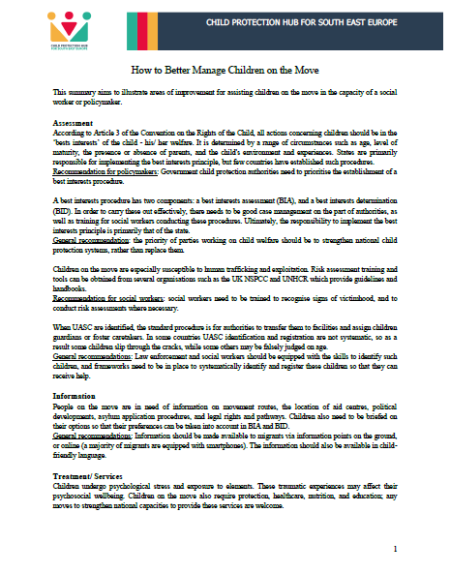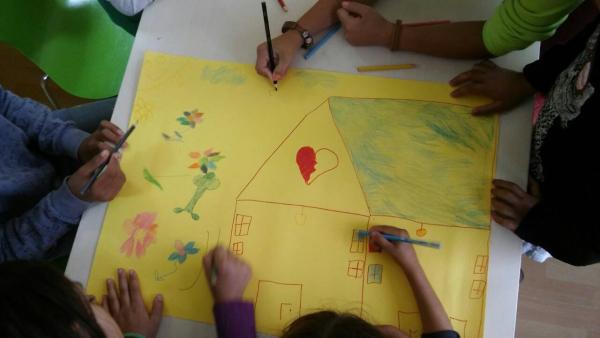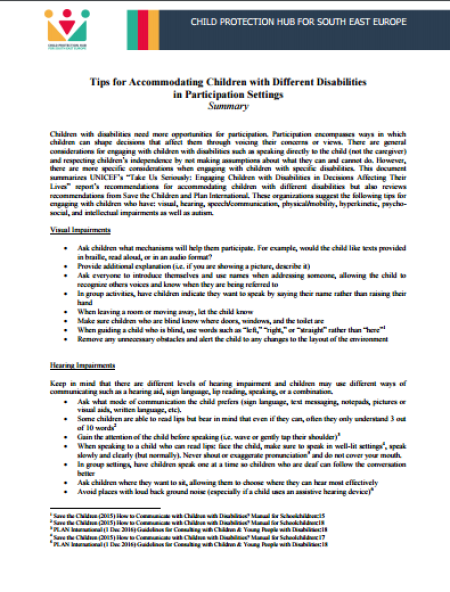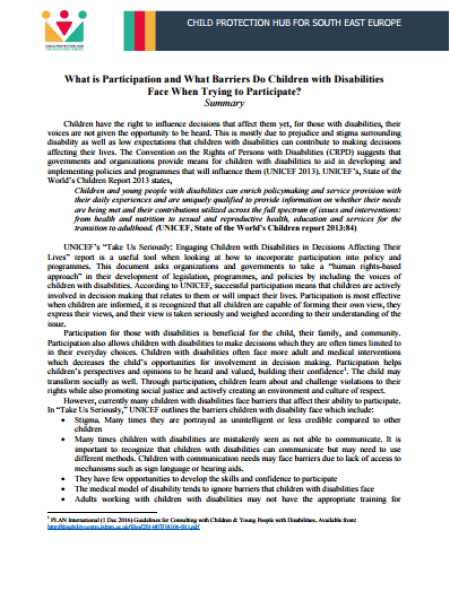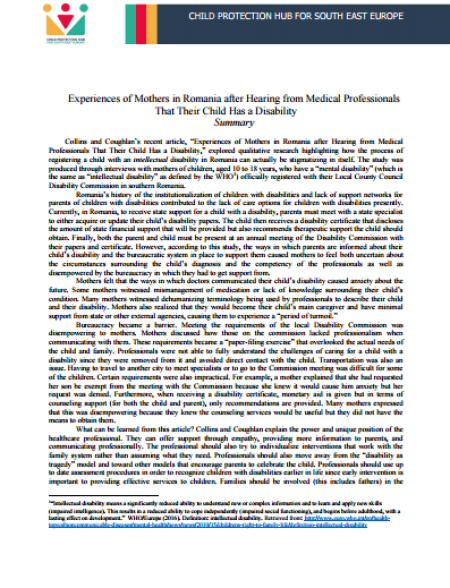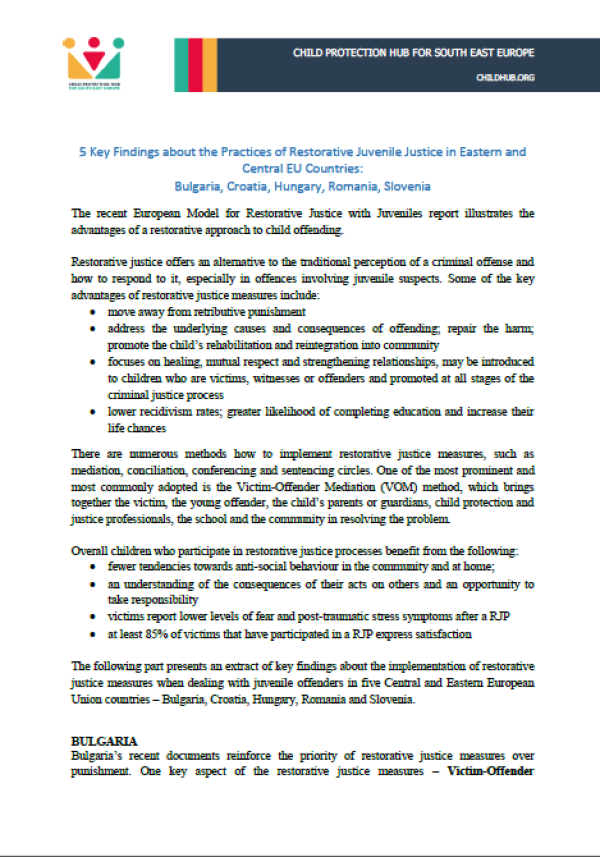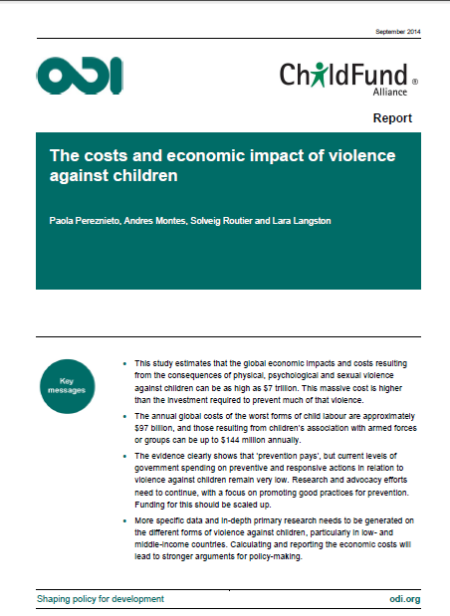
This summary aims to illustrate areas of improvement for assisting children on the move in the capacity of a social worker or policymaker.
Assessment
According to Article 3 of the Convention on the Rights of the Child, all actions concerning children should be in the ‘bests interests’ of the child - his/ her welfare. It is determined by a range of circumstances such as age, level of maturity, the presence or absence of parents, and the child's environment and experiences. States are primarily responsible for implementing the best interests principle, but few countries have established such procedures.
Recommendation for policymakers: Government child protection authorities need to prioritise the establishment of a best interests procedure.
A best interests procedure has two components: a best interests assessment (BIA), and a best interests determination (BID). In order to carry these out effectively, there needs to be good case management on the part of authorities, as well as training for social workers conducting these procedures. Ultimately, the responsibility to implement the best interests principle is primarily that of the state.
General recommendation: the priority of parties working on child welfare should be to strengthen national child protection systems, rather than replace them.
Children on the move are especially susceptible to human trafficking and exploitation. Risk assessment training and tools can be obtained from several organisations such as the UK NSPCC and UNHCR which provide guidelines and handbooks.
Recommendation for social workers: social workers need to be trained to recognise signs of victimhood, and to conduct risk assessments where necessary.
When UASC are identified, the standard procedure is for authorities to transfer them to facilities and assign children guardians or foster caretakers. In some countries UASC identification and registration are not systematic, so as a result some children slip through the cracks, while some others may be falsely judged on age.
General recommendations: Law enforcement and social workers should be equipped with the skills to identify such children, and frameworks need to be in place to systematically identify and register these children so that they can receive help.
Information
People on the move are in need of information on movement routes, the location of aid centres, political developments, asylum application procedures, and legal rights and pathways. Children also need to be briefed on their options so that their preferences can be taken into account in BIA and BID.
General recommendations: Information should be made available to migrants via information points on the ground, or online (a majority of migrants are equipped with smartphones). The information should also be available in child-friendly language.
Treatment/ Services
Children undergo psychological stress and exposure to elements. These traumatic experiences may affect their psychosocial wellbeing. Children on the move also require protection, healthcare, nutrition, and education; any moves to strengthen national capacities to provide these services are welcome.
General recommendations: Foster parents and professionals working with them need to be able to recognize trauma, provide basic psychosocial support, and refer children to other relevant experts when necessary (Save the Children, 2017). National governments must ensure that they have the capacity to identify children who require treatment/ services, and that structures are already in place to provide such services.
Data
Updated and accurate data is crucial for planning authorities and humanitarian organisations to monitor the situation, let alone draft effective policies, and allocate resources to assist people and children on the move. However, there is overall a lack of data and standardised data on children on the move. For example, countries generally do not collect or report data on undetected irregular migrants, which paints an incomplete picture of migrant numbers. Among those detected, some national authorities collect and report detection figures, which others produce figures on detained persons or asylum-applications (Save the Children and International Rescue Committee, 2017).
Recommendations for policymakers: data needs to be coordinated on a regional level at the minimum - this may be possible by opening a dialogue with all parties, governmental and non-governmental, to standardise data collection and demarcate areas of operation. Data also needs to be disaggregated by age, gender, and other useful segments, as well as conducted in consistent intervals.
Policy Approaches
There is no one-size-fits-all method of caring for migrants. One desired approach is to recognise that the needs of affected individuals vary by age and gender, and as such policies must also be age and gender specific. For instance, reception centres staff need to be able to communicate in a child-friendly manner, and where possible UASCs should be separated from adults.
A good policy should also have elements of voluntary involvement of locals. When UASC are identified, the authorities usually transfer them to facilities and assign guardians or foster caretakers. This means matching voluntary or involuntary local guardians with these children and assigning responsibility to these guardians. In most countries, guardians are appointed involuntarily, and as a result many of such relationships are weak - children do not think they have a reliable adult to turn to, and guardians are either too overwhelmed with other allotted children or apathetic. However “when voluntary guardianship works properly, and the child feels a connection with the guardian—that another human being genuinely cares—it has a powerful effect on reducing abuse, exploitation and harm”. In Sicily, “Italian authorities acknowledged that ‘institutional’ guardianship was not effective and recognized the added value that active citizenship could bring in protecting unaccompanied children”; they switched to a voluntary guardianship scheme where “the guardian ensures that the child is well informed and legally assisted, that their best interests are properly assessed, crucially, with the child’s active participation” (Genovese, 2018).
In many destination countries, the placement of UASC with families from a similar socio-cultural background was recognized as a good practice (Save the Children, 2017). “Two studies compared unaccompanied refugee minors (URM) living with white Americans and URM living with a family that contained at least one other person of their ethnicity (Sudanese or Indochinese) (Geltman et al. 2005; Porte and Torney-Purta 1987). In both studies, children had better outcomes if they were placed with an ethnically matched group.” (O’Higgins, Ott and Shea, 2018, p.9). In line with this, any policy should also be evidence-based. This highlights the importance of good data and informed judgement on the policymaker’s end; having an accurate figure and projection of child migrants in a country can allow its authorities to better allocate resources toward this target group.
General recommendations: any measure to assist migrants should be age- and gender-sensitive. Locals should be given the opportunity to become involved voluntarily, and an evidence-based approach to drafting policies will likely produce better outcomes for beneficiaries.
Resources tend to be limited to ground workers, so efforts need to be better coordinated and resources shared to avoid overlaps and maximise the impact of our resources. There also needs to be better greater intergovernmental and inter-organisational cooperation to manage migration. Migration is an issue that must be tackled collectively.
General recommendations: on top of coordinating data collection methods and efforts, it is also crucial to establish a platform where the efforts (relief operations, case management) of all actors can be tracked so as to avoid overlaps and to identify unaddressed/ poorly addressed areas.
Currently, the EU operates on the Dublin Convention, which stipulates that asylum seekers can only seek asylum in one EU country and that the country receiving the application is solely responsible for processing the claim. The Dublin system adds pressures on the external regions of the EU, where the majority of asylum seekers enter and where states often have the least capacity to support and protect asylum-seekers. A rejection for asylum means that applicants face the possibility of returning to prosecution. Many countries experiencing the heaviest flow of migrants (e.g. Italy, Hungary) look forward to a common European policy on migration, as they perceive that they had been ‘left alone’ to handle the refugee crisis (Samek Lodovici, M. et al., 2017).
Recommendation for policymakers: Destination countries need an effective integrated system to process migration procedures and asylum-applications i.e. case management. EU members need to begin taking a greater share of responsibility to relieve structural stress on the countries experiencing the heaviest flow of immigrants and asylum-seekers. A political solution to push factors need to be found. This requires the commitment and cooperation of the international community to find solutions and pursue common goals, such as the alleviation of suffering of civilians.
Summary
To briefly sum up all the ways that the needs of children on the move can be catered to, certain key ideas stand out. There is a need to strengthen national capacities, develop and adopt SOPs, and improve coordination. Where possible, policies should be driven by evidence.
For more information and references please download the document below.


